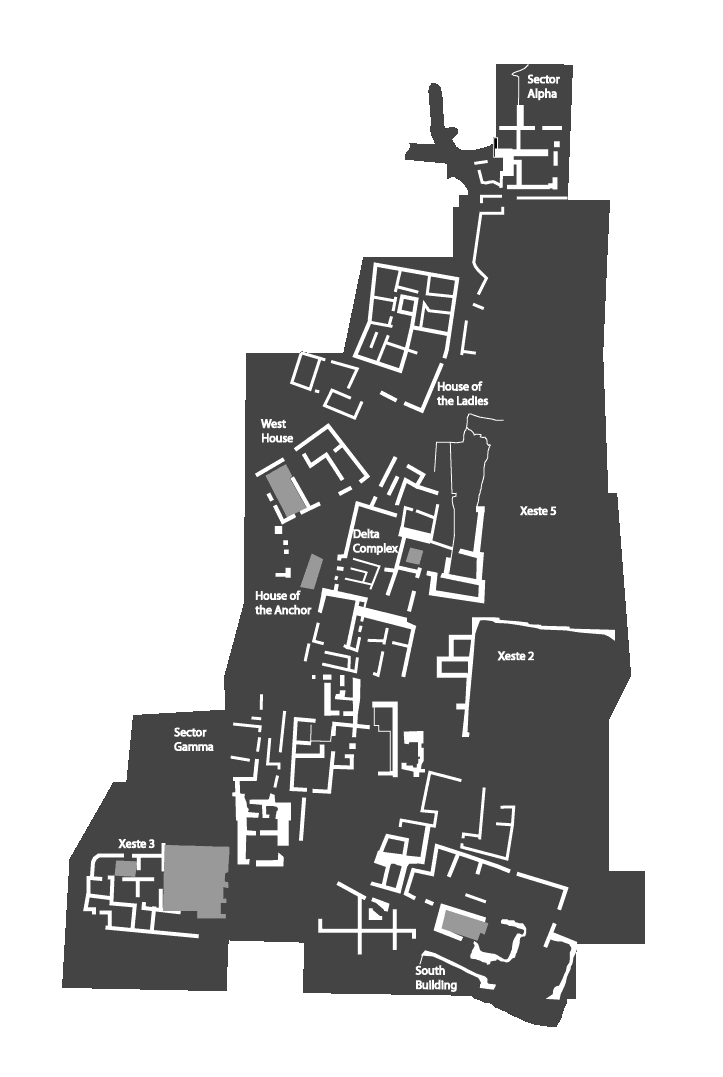Akrotiri Archaeological Site
The village called Akrotiri is mostly known for its archaeological site although it is a very nice place. You will find it at the southernmost tip of Santorini.
The Cretan influence was obvious in Akrotiri since it has been transformed into a Minoan civilization until the time that it was covered by ashes after the volcanic eruption around 1500 BC. The fact that the ashes covered the whole town was a reason for its preservation. Excavations in the area started in 1967 under the supervision of Professor Spyridon Marinatos and still continue up to this day. Many discoveries have been made since the beginning of the excavations and the items found are very well preserved.
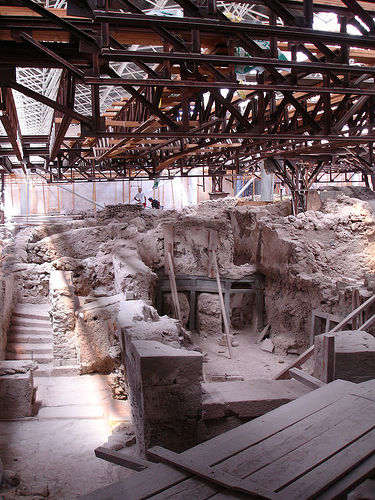
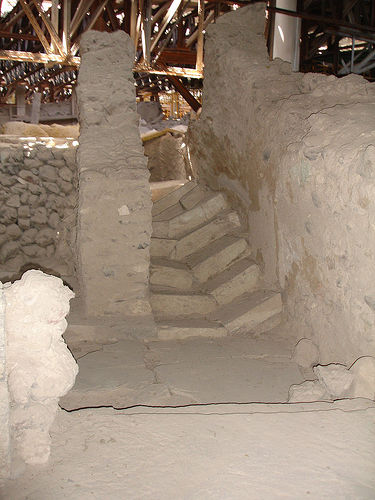
Walking around the old city of Akrotiri as it is today one will understand that it doesn't differ from the island's traditional patterns regarding architecture and design. There are small roads, squares, pavements with sewage canals connected to the houses passing underneath and houses with two or three floors. The houses had wooden or stone staircases inside and some of them have been saved until today in excellent condition. The ground floors were usually used as shops while the living quarters were upstairs. It seems that each home was self-sufficient since hand mills for flour production were found in almost every home. It seems that the people also owned weaving devices as well as storage pots for wheat, barley, almonds, oil, wine and salted fish the remains of which were found in the pots. The pots used for the storage of oil and wine were somewhat different than those containing wheat and barley.
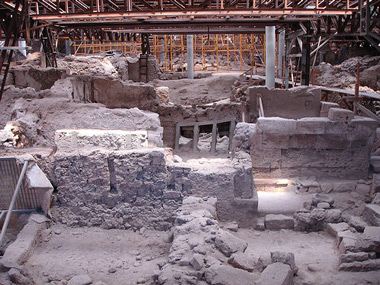
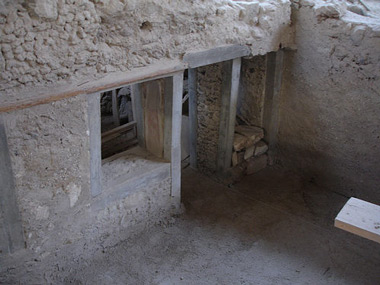
The reason why most people are familiar with Akrotiri is the discovery of the wonderful murals decorating the walls of the houses. Some of them were found in excellent state. From those murals the archaeologists had the opportunity to study the specific era as well as the characteristics of everyday life, rituals, and festivities from the images presented on the murals. Details such as hair styles and clothes are also apparent on murals and that is the reason that we know so much about the civilization of this era. The murals were mainly found on the second floor of the houses. Archaeologists have detached them and they are currently exhibited on the second floor of the National Archaeological Museum in Athens.
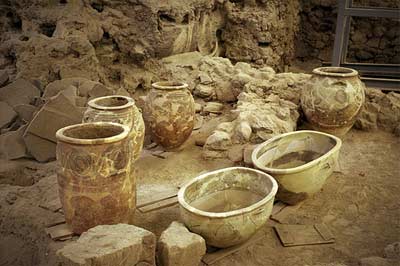
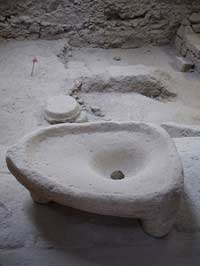
The excavation itself as well as the details gathered from the findings showed us that the eruption wasn't so sudden after all since no human skeletons or valuable items were found anywhere in the premises. The tenants had the time to gather their belongings so maybe smaller earthquakes had warned them for the disaster. After a strong earthquake some of the habitants returned and started repairing their houses. This period of time lasted for a while but the town was permanently abandoned just before the big eruption. Maybe some earthquakes warned the habitants again who decided to leave the island on time.

The whole Aegean world was affected by the volcanic eruption in 1500BC. The consequences were also obvious on the surrounding islands and a big part of Crete. Spyridon Marinatos had a theory that the downfall of the Minoan civilization was due to the volcanic eruption although this idea was doubted severely by new excavation data. The lava covered the whole island reaching up to 20 meters high. The geological consequences were huge. A part of the island sunk in the sea following a gradual process which lasted more than a hundred years. This disaster inspired Plato to write his story about Atlantis, the lost city.
Akrotiri Archaeological Site - Map
